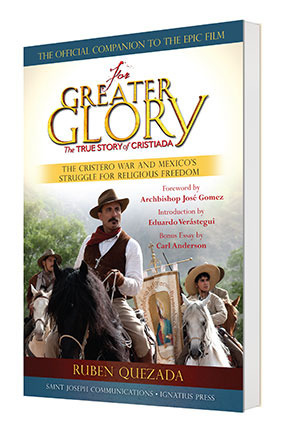Carl E. Olson's Blog, page 216
June 1, 2012
"For Greater Glory: The True Story of Cristiada"
Now available for pre-order from Ignatius Press:
by Ruben Quezada
Related Products: Cristiada (Spanish Edition of "For Greater Glory") - Paperback
Available June 2012
Foreword by Archbishop Jose Gomez
Introduction by Eduardo Verastegui
Many people of faith today are asking, “What is the price of religious liberty?” In the 1920’s many Catholics in Mexico answered this crucial question at the cost of their very lives. The new major motion picture, For Greater Glory: The True Story of Cristiada tells the epic tale of Mexico’s heroic struggle for religious freedom in a little-known conflict called the Cristero War – but many questions still remain. Now you’ll go much deeper into the exciting history behind the movie with this fact-filled companion book – and gain important insight into the on-going fight for religious freedom today. This is the Official Companion Book to the epic film. Lavishly illustrated with photos from the film and with historical photos.
As you read you’ll discover:
• Who were the Cristeros?
• What drove the Mexican government to ruthlessly persecute Catholics?
• Can a priest “wage war”
• What role did groups like the Knights of Columbus play in this armed resistance?
• Why did thousands of Catholics - priests, religious, lay people - willingly give their lives in the Cristiada?
• What role did the U.S. play in ending this bitter conflict?
• What did the Pope do to support the Church in Mexico?
• Which characters in the movie went on to become Catholic saints and blesseds in real life?
• Why is this dramatic episode of history so little known today?
• What is the lesson of the Cristiada for those struggling for religious freedom today?
Ruben Quezada is Director for the Catholic Resource Center and St. Joseph Communications, Inc. in Southern California. He is a recognized expert on "The Persecution of the Catholic Church in Mexico in the 1920s" and has traveled internationally as a bilingual speaker giving lectures on this subject for many years to all age groups.
“For Greater Glory is a top-flight production whose message of the
importance of religious freedom has particular resonance for us today.”
— Most Reverend Jose Gomez, Archbishop of Los Angeles
“For Greater Glory is ‘must-see’ viewing for all those who care about faith and liberty today.”
— Carl Anderson, Supreme Knight, Knights of Columbus
Visit the book's website: www.ForGreaterGloryBook.com. For the Spanish Edition of For Greater Glory, click here.
Sample images from the book:

May 31, 2012
When Pregnancy Met Pregnancy | Abp. Fulton J. Sheen on The Visitation

When Pregnancy Met Pregnancy | Archbishop Fulton J. Sheen on The Visitation | From The World's First Love | Ignatius Insight
 Print-friendly version
Print-friendly version
One of the most beautiful moments in history was that when pregnancy met pregnancy when childbearers became the first heralds of the King of Kings. All pagan religions begin with the teachings of adults, but Christianity begins with the birth of a Child. From that day to this, Christians have ever been the defenders of the family and the love of generation. If we ever sat down to  write out what we would expect the Infinite God to do, certainly the last thing we would expect would be to see Him imprisoned in a carnal ciborium for nine months; and the next to last thing we would expect is that the "greatest man ever born of woman" while yet in his mother's womb, would salute the yet imprisoned God-man. But this is precisely what took place in the Visitation.
write out what we would expect the Infinite God to do, certainly the last thing we would expect would be to see Him imprisoned in a carnal ciborium for nine months; and the next to last thing we would expect is that the "greatest man ever born of woman" while yet in his mother's womb, would salute the yet imprisoned God-man. But this is precisely what took place in the Visitation.
At the Annunciation the archangel told Mary that her cousin, Elizabeth, was about to become the mother of John the Baptist. Mary was then a young girl, but her cousin was ''advanced in years," that is, quite beyond the normal age of conceiving. "See, moreover, how it fares with thy cousin Elizabeth; she is old, yet she too has conceived a son; she who was reproached with barrenness is now in her sixth month, to prove that nothing is impossible with God. And Mary said, 'Behold the handmaid of the Lord, let it be done unto me according to thy word.' And with that the angel left her." (Luke 1:36-38)
The birth of Christ is without regard to man; the birth of John the Baptist is without regard to age! "Nothing is impossible with God." The Scripture continues the story: "In the days that followed, Mary rose up and went with all haste to a city of Juda, in the hill country where Zachary dwelt; and entering in she gave Elizabeth greeting. No sooner had Elizabeth heard Mary's greeting, than the child leaped in her womb; and Elizabeth herself was filled with the Holy Ghost; so that she cried out with a loud voice, "Blessed are thou among women and blessed is the fruit of thy womb. How have I deserved to be thus visited by the mother of my Lord? Why, as soon as ever the voice of thy greeting sounded in my ears, the child in my womb leaped for joy. Blessed art thou for thy believing; the message that was brought to thee from the Lord shall have fulfillment." (Luke 1:39-45)
Mary "went with all haste"; she is always in a hurry to do good. With deliberate speed she becomes the first nurse of Christian civilization. The woman hastens to meet a woman. They serve best their neighbor who bear the Christ within their hearts and souls. Bearing in herself the Secret of Salvation, Mary journeys five days from Nazareth to the city of Hebron where, according to tradition, rested the ashes of the founders of the people of God, Abraham, Isaac, and Jacob.
The terraced-fields of Juda
pregnant with seed
called out to her
as she passed, praising the Child
she was yet to bear,
invoking His Blessing
on their expectancy.*
"She gave Elizabeth greeting"; springtime served the autumn. She, who is to bear Him Who will say: "I came not to be ministered unto but to minister" now ministers unto her cousin who bears only His trumpet and His voice in the wilderness. Nothing so provokes the service of the needy as the consciousness of one's own unworthiness when visited by the grace of God, The handmaid of the Lord becomes the handmaid of Elizabeth.


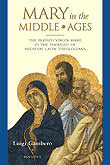







On hearing the woman's greeting, the child whom Elizabeth bore within her "leaped in her womb." The Old Testament is here meeting the New Testament; the shadows dissolve with joy before the substance. All the longings and expectations of thousands of years as to Him Who would be the Saviour are now fulfilled in this one ecstatic moment when John the Baptist greets Christ, the Son of the Living God.
Mary is present at three births: at the birth of John the Baptist, at the birth of her own Divine Son, and at the "birth" of John, the Evangelist, at the foot of the Cross, as the Master saluted him: "Behold thy mother!" Mary, the Woman, presided at the three great moments of life: at a birth on the occasion of the Visitation, at a marriage at the Marriage Feast of Cana, and at a Death, or surrender of Life, at the Crucifixion of her Divine Son.
"The child leaped in her womb, and Elizabeth herself was filled with the Holy Ghost." A Pentecost came before Pentecost. The physical body of Christ within Mary now fills John the Baptist with the Spirit of Christ; thirty-three years later the Mystical Body of Christ, His Church, will be filled with the Holy Spirit, as Mary, too, will be in the midst of the Apostles abiding in prayer. John is sanctified by Jesus. So Jesus is not as John - not man alone, but God, as well.
The second part of the second most beautiful prayer in the world, the Hail Mary, is now about to be written; the first part was spoken by an angel: "Hail (Mary) full of grace; the Lord is with Thee; blessed art thou amongst women." (Luke 1:28)
Now Elizabeth adds the second part in a "loud voice"; "Blessed art thou among women and blessed is the fruit of thy womb (Jesus)" Old age is here not jealous of youth or privilege, for Elizabeth makes the first public proclamation that Mary is the Mother of God: "How have I deserved to be thus visited by the mother of my Lord?" She learned it less from Mary's lips than from the Spirit of God nestling over her womb. Mary received the Spirit of God through an angel; Elizabeth was the first to receive it through Mary.
Cousin-nurse at birth, Mother-nurse at death. There is nothing Mary has that is for herself alone - not even her Son. Before He is born, her Son belongs to others. No sooner does she have the Divine Host within herself than she rises from the Communion rail of Nazareth to visit the aged and to make her young. Elizabeth would never live to see her son lose his head to the dancing stepdaughter of Herod, but Mary would live and die at once in seeing her Son taste death, that death might be no more.
* Calvin Le Compte, I Sing of a Maiden, Macmillan, 1949.
Related IgnatiusInsight.com Articles and Excerpts:
• The Virtually Venerable Fulton J. Sheen | Charles F. Harvey
• Mary, The Woman the World Loves | Archbishop Fulton J. Sheen br> • Mary in Byzantine Doctrine and Devotion | Brother John M. Samaha, S.M.
• Fairest Daughter of the Father: On the Solemnity of the Assumption | Rev. Charles M. Mangan
• The Blessed Virgin in the History of Christianity | John A. Hardon, S.J.
• "Hail, Full of Grace": Mary, the Mother of Believers | Joseph Cardinal Ratzinger
• The Disciple Contemplates the Mother | Erasmo Leiva-Merikakis
• Mary in Feminist Theology: Mother of God or Domesticated Goddess? | Fr. Manfred Hauke
• Excerpts from The Rosary: Chain of Hope | Fr. Benedict Groeschel, C.F.R.
• The Past Her Prelude: Marian Imagery in the Old Testament | Sandra Miesel
• Immaculate Mary, Matchless in Grace | John Saward
• The Medieval Mary | The Introduction to Mary in the Middle Ages | by Luigi Gambero
• Born of the Virgin Mary | Paul Claudel
• Assumed Into Mother's Arms | Carl E. Olson
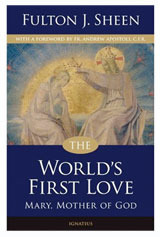 The World's First Love: Mary, Mother of God (2nd edition)
The World's First Love: Mary, Mother of God (2nd edition)
by Archbishop Fulton J. Sheen
Anniversary Edition with New Foreword by Fr. Andrew Apostoli
• Also available as a Downloadable Audio File. To hear a sample reading of The World's First Love, click here
With his characteristic eloquence and brilliance, Fulton J. Sheen presents a moving portrayal of the Blessed Virgin Mary that combines deep spirituality with history, philosophy and theology. All the major aspects and events of Mary's life are lovingly portrayed in this word portrait that is a never failing source of information, consolation and inspiration. Sheen also gives profound insights into all the Marian beliefs ranging from the Immaculate Conception to the Assumption to the miracle of Our Lady of Fatima.
While considering the different phases of Mary's life, Bishop Sheen discusses various problems common to mankind of every age and reveals clearly that every problem can be resolved. He emphasizes the unique dignity, strength and gifts of women and their ability to help heal the world's problems. Sheen stresses mankind's need of the Mother of God and her burning love for all her children. The great resurgence of devotion to Mary is God's way of emphasizing the worth and dignity of every person against the false doctrines that have so confused the modern world.
"A stimulating literary picture of the Blessed Virgin Mary ... an impressive scope of information."
— Newark News
"A remarkable book by Sheen. Many rays of inspiration are to be gleaned from this thought-provoking work."
— Philadelphia Inquirer
"The whole treatment is based on a high key that reflects the author's deep reverence and devotion for the Blessed Virgin."
— Chicago Sunday Tribune
“With the world situation as challenging as it is today, especially the fear of war and terrorism, this book is truly prophetic. Sheen presents powerful insights into how Our Lady can help us in dealing with the problems in today’s world. Among his many books, Sheen cherished this book as his personal favorite!”
— Fr. Andrew Apostoli, CFR
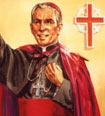 Archbishop Fulton Sheen (1895-1979) is considered by many to be the most influential Catholic of the 20th century in America. Millions of people watched his incredibly popular television series every week, "Life is Worth Living", and millions more listened to his radio program, "The Catholic Hour". Wherever he preached in public, standing-room-only crowds packed churches and halls to hear him. He had the same kind of charisma and holiness that attracts so many people to Pope John Paul II, who called Sheen "a loyal son of the Church." Learn more about Archbishop Sheen by reading his autobiography, Treasure In Clay, or visiting the Archbishop Fulton J. Sheen Foundation website.
Archbishop Fulton Sheen (1895-1979) is considered by many to be the most influential Catholic of the 20th century in America. Millions of people watched his incredibly popular television series every week, "Life is Worth Living", and millions more listened to his radio program, "The Catholic Hour". Wherever he preached in public, standing-room-only crowds packed churches and halls to hear him. He had the same kind of charisma and holiness that attracts so many people to Pope John Paul II, who called Sheen "a loyal son of the Church." Learn more about Archbishop Sheen by reading his autobiography, Treasure In Clay, or visiting the Archbishop Fulton J. Sheen Foundation website.
Merry England Fights Over Gay Marriage
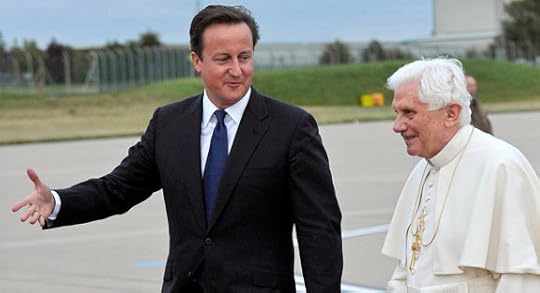
Merry England Fights Over Gay Marriage | Greg Daly | Catholic World Report
Prime Minister David Cameron and other government leaders push for same-sex marriage, but most Brits are wary.
The contrast could hardly have been more jarring.
In a televised White House interview on Wednesday, May 9, President Barack Obama claimed that, having gone through an evolution on the issue, he had concluded, “it is important for me to go ahead and affirm that I think same-sex couples should be able to get married.”
That same day, an ocean away in England, Queen Elizabeth II opened the current session of Parliament, for the 60th time in her reign sitting in her House of Lords throne to proclaim her government’s legislative program for that year. Wearing her Imperial State Crown and parliamentary robe, she spoke for eight minutes, and on the issue of same-sex marriage, said absolutely nothing.
Cameron’s cynical campaign
The Home Office claims the government never intended to include same-sex marriage in this year’s legislative program, but it is beginning to look as if Prime Minister David Cameron’s wish to redefine marriage in English law is set to end, not with a bang, but with a whimper.
Cameron’s campaign had always looked like a cynical vanity project, given how the 2004 Civil Partnerships Act enables same-sex couples to make a public declaration of their commitment and avail themselves of the same legal rights as married couples. When then-Prime Minister Tony Blair’s government introduced that legislation, it insisted that although the new scheme gave same-sex couples equal rights and privileges to married ones, civil partnerships and marriages were not the same thing.
Stonewall, Britain’s leading gay lobby group, was so content with this arrangement that in September 2010, its chief executive Ben Summerskill publicly opposed the newly-declared wish of the Liberal Democrats—the junior partner in Britain’s Conservative-led coalition government—to redefine marriage and civil partnerships so that same-sex and opposite-sex couples could choose which arrangement they wished to enter. Claiming this could cost as much as £5 billion and noting that a cosmetic marital reform was hardly a priority for the gay movement, Summerskill pointed out that many lesbian, gay, and bisexual people were opposed to same-sex couples participating in “something that is either the same as or synonymous with marriage.”
Even without Stonewall’s opposition, the Liberal Democrats’ original proposal to redefine marriage looked purely aspirational without a popular mandate; the introduction of same-sex marriage had been conspicuously absent from the manifestos of Britain’s three main parties in the general election that had been held just months earlier.
On September 17, 2011 the Liberal Democrat equalities minister Lynne Featherstone announced at her party’s annual conference that the government would begin a formal consultation this March on how to introduce same-sex marriage into UK law by the end of this parliament. “This is a Liberal Democrat policy,” she said. “But now it is a policy being put into action.”
This time Stonewall approved, and scarcely two weeks later, David Cameron proclaimed at the Conservatives’ conference, “I don’t support gay marriage despite being a Conservative. I support gay marriage because I’m a Conservative.”
May 30, 2012
40% off Carl E. Olson's Pick of the Week*

40% off Carl Olson's Pick of the Week*
I've chosen a book that I recommend for at least three good reasons. First, it addresses a topic of great importance to 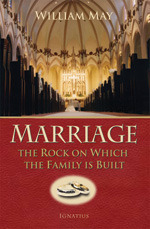 everyone. Second, it is written by a fabulous scholar who has spent most of his life studying, teaching, and writing about the topic and related subjects. Third, it is a "101" text, the sort of introductory work that is perfect for the "ordinary" lay Catholic, but also ideal for catechists, priests, teachers, and bishops. Oh, and let's not forget politicians, newspaper editors, and television pundits.
everyone. Second, it is written by a fabulous scholar who has spent most of his life studying, teaching, and writing about the topic and related subjects. Third, it is a "101" text, the sort of introductory work that is perfect for the "ordinary" lay Catholic, but also ideal for catechists, priests, teachers, and bishops. Oh, and let's not forget politicians, newspaper editors, and television pundits.
The book is Marriage: The Rock on Which The Family is Built (2nd Edition, 2009) by William E. May. I first read it—in its first edition—fourteen years ago for a class on family and marriage in my Masters in Theological Studies program. It was the first book I'd read by Dr. May (not the last, thankfully!), and I was impressed by his clarity of style (no words wasted!) and his masterful handling of complex theological truths and philosophical ideas (no words mangled!). Dr. May, who is now retired, taught for many years at the John Paul II Institute for Studies on Marriage and Family in Washington, D.C., and he served at one time on the Vatican's International Theological Commission. In other words, he's a smart guy! He has dedicated his great skills as a scholar and educator to explaining and defending the divinely ordained institution of marriage. Or, as he states at the start of the book's first chapter, "I shall show that marriage, the rock upon which the family is built, is a person-affirming, love-enabling, life-giving, and sanctifying reality." And he does.
The first edition had five chapters with an appendix; the second edition has been expanded to seven chapters plus appendix. The opening chapter expounds on the sentence quoted above; the second chapter is about the complimentarity of male and female, and what it means. Chapter three is titled, "Pope Paul VI: A True Prophet", and is about Humanae Vitae; the fourth chapter discusses the serious moral problems with the "laboratory generation of human life". Chapter five explains why the family is "the domestic church" and chapter six is on Blessed John Paul II's theology of the body. The final chapter is on Pope Benedict XVI's teaching on marriage and family life. The appendix is an overview of John Paul II's "Letter to Families".
Marriage is, as you well know, increasingly and directly under attack in many ways. For anyone who wishes to understand and appreciate more deeply the truth about the person-affirming, love-enabling, life-giving, and sanctifying reality of marriage, this book is a perfect place to start.
And it is available in three formats: in paperback, as an electronic book download, and as a downloadable audio file.
 Carl E. Olson is the editor of Catholic World Report and IgnatiusInsight.com, and the moderator of the Insight Scoop weblog. Carl is the author of the best-selling book Will Catholics Be "Left Behind"? (2003), available as an e-book, and is the co-author, with Sandra Miesel, of The Da Vinci Hoax: Exposing the Errors in The Da Vinci Code. Carl is the former editor of Envoy magazine and has written dozens of reviews and articles for periodicals including Catholic Parent, Crisis, Envoy, First Things, National Catholic Register, Our Sunday Visitor, Saint Austin Review, and The Catholic Answer.
Carl E. Olson is the editor of Catholic World Report and IgnatiusInsight.com, and the moderator of the Insight Scoop weblog. Carl is the author of the best-selling book Will Catholics Be "Left Behind"? (2003), available as an e-book, and is the co-author, with Sandra Miesel, of The Da Vinci Hoax: Exposing the Errors in The Da Vinci Code. Carl is the former editor of Envoy magazine and has written dozens of reviews and articles for periodicals including Catholic Parent, Crisis, Envoy, First Things, National Catholic Register, Our Sunday Visitor, Saint Austin Review, and The Catholic Answer.
*Employee Pick of the Week program features savings of 40% off a book, movie, or compact disc personally chosen and recommended by an Ignatius Press employee. Each week, an Ignatius Press employee will select a favorite book, movie, or other Ignatius Press product and write a few sentences about why he/she thinks customers will enjoy the particular selection. A short bio of the selecting employee will also be included, giving customers a chance to learn a bit more about the people who are Ignatius Press. Email blast items below are not 40% off, but 20% off
20% off books by Cardinal Christoph Schoenborn, May 29 - June 5

Offer ends Tuesday June 5th, 2012 at 12:00 midnight EST. These prices are available online only through Ignatius.com
Christoph Cardinal Schönborn is the Archbishop of Vienna. The renowned theologian was the primary editor of the Catechism of the Catholic Church. Born in 1945, the Dominican was a student of Joseph Ratzinger, now Pope Benedict XVI. He has written numerous books and articles on faith. Ignatius Press is offering 20% off on a selection of books that were written by Schoenborn.
See below the "fold" for a full listing of sale books:
Books
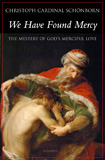 We Have Found Mercy
We Have Found Mercy
The Mystery of God's Merciful Love
The message of Divine Mercy as communicated through Sister Faustina is both a starting point and a recurring theme for Cardinal Schönborn's discussion of God's merciful love. The Archbishop of Vienna explores the presence of God's great mercy in the Scriptures, Tradition, the life of Christ, and the sacraments and works of the Church, while raising important questions along the way, such as, "What is the relationship between mercy and justice?"
Regular price: $14.95, sale price: $11.96
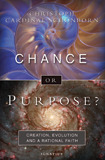 Chance or Purpose?
Chance or Purpose?
Creation, Evolution, and a Rational Faith
Cardinal Christoph Schönborn's article on evolution and creation in The New York Times launched an international controversy. Critics charged him with biblical literalism and "creationism". In this book, Cardinal Schönborn responds to his critics by tackling the hard questions with a carefully reasoned "theology of creation".
Regular price: $19.95, sale price: $15.96
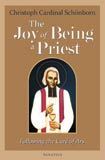 The Joy Of Being A Priest
The Joy Of Being A Priest
Following the Cure of Ars
This insightful book on the priesthood is based on a series of six talks that Cardinal Schönborn addressed to an international group of priests in Ars, the village where the famed St. John Vianney served as pastor. In these talks, the Cardinal summarized the vocation, challenge, and joy of the priesthood, drawing on the life of the Curé of Ars, the writings of St. Thérèse of Liseux, St. Faustina Kowalska, and many other saints and holy people.
Regular price: $12.95, sale price: $10.36
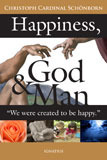 Happiness, God and Man
Happiness, God and Man
The highly regarded teacher, writer and pastoral churchman, Cardinal Schonborn, talks about man's happiness, small and great, about happiness as it is supposed to be and as it is discovered. He explains what it means to say that all human beings are created for happiness. His insightful writings are centered on meditations about happiness and also about the deeper meaning of love and friendship.
Regular price: $16.95, sale price: $13.56
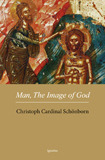 Man, The Image of God
Man, The Image of God
The Creation of Man as Good News
God created man in his own image, and the profound implications of this assertion are the subject of this book. Drawing on philosophy, theology, science, Scripture and art, Cardinal Schönborn reflects on man as the greatest of God's creatures and on the Christian understanding of his incomparable dignity that flows from this truth.
Regular price: $14.95, sale price: $11.96
 YOUCAT
YOUCAT
Youth Catechism of the Catholic Church
Developed with the help of young Catholics and written for high-school age people and young adults, YOUCAT is an accessible, contemporary expression of the Catholic Faith. The appealing graphic format includes Questions-and-Answers, highly-readable commentary, summary definitions of key terms, Bible citations and inspiring and thought-provoking quotes from Saints and others in the margins. What's more, YOUCAT is keyed to the Catechism of the Catholic Church, so people can go deeper.
Regular price: $19.95, sale price: $15.96
Who Needs God?
Who needs God? What does God provide? Can we truly live without faith? Why does the Church so often seem not to understand us and our needs? These and many other questions are posed to Cardinal Schönborn in this book.
Regular price: $14.95, sale price: $11.96
My Jesus
Encountering Christ in the Gospel
By following the Gospel of Matthew over the course of a year, Schönborn presents a comprehensive picture of Jesus, showing how the gospel gives help and light in the midst of daily life. Illustrated.
Regular price: $16.95, sale price: $13.56
Behold, God's Son!
Thoughts on the Gospel in the Year of St. Mark
The Cardinal says that no other Gospel writer talks in such a human way about Jesus as Mark. But however human Jesus may appear here, it is also Mark in particular who also strongly emphasizes his divinity.
Regular price: $16.95, sale price: $13.56
God Sent His Son
A Contemporary Christology
Cardinal Schönborn's work moves from the solid conviction of faith that Jesus of Nazareth is the Messiah of Israel, the Son of the Living God, through the development of the Church's understanding of this truth, to the consideration of contemporary issues and the views of various modern theologians.
Regular price: $24.95, sale price: $19.96
Living the Catechism of the Catholic Church, Vol. 1
The Creed
Schönborn presents a profound commentary on the Creed, one of the major pillars of the Catechism. He gives an incisive analysis of the Creed, providing a specific meditation for each week of the year.
Regular price: $10.95, sale price: $8.76
Living the Catechism of the Catholic Church, Vol. 3
Life in Christ
Schönborn provides a profound commentary on the third part of the Catechism, Life in Christ. He gives an incisive, detailed analysis of living the Christian life, providing a specific meditation for each week of the year on how to better live the Catholic faith.
Regular price: $10.95, sale price: $8.76
Loving the Church
Retreat to John Paul II & Papal Household
In this retreat preached to Pope John Paul II and the papal household, Schön born uses the new Catechism and Scripture to lead us to a deeper union with Christ. He uses the methods of St. Ignatius Loyola's famous retreat and the thoughts of St. Thérèse of Lisieux.
Regular price: $14.95, sale price: $11.96
Jesus, the Divine Physician
Encountering Christ in the Gospel of Luke
Cardinal Schönborn presents this third book in his series of meditations on the Gospels, in which he seeks to help readers have a deep personal encounter with Jesus Christ as seen in the Sacred Scriptures.
Regular price: $16.95, sale price: $13.56
God's Human Face
The Christ Icon
Schönborn, presents the sources of meditation on the mystery of God's human face from the great Masters of early Christianity. An introduction to the meaning and beauty of icons. Includes icon illustrations.
Regular price: $16.95, sale price: $13.56
From Death to Life
The Christian Journey
Schönborn presents profound reflections on the meaning of death, judgment and eternal life, and the Church's teachings on this eschatological dimension of our faith
Regular price: $12.95, sale price: $10.36
Living the Catechism of the Catholic Church, Vol. 2
The Sacraments
Schönborn provides a profound commentary on the second part of the Catechism, the Sacraments, providing a specific meditation for each week of the year on how to better live the Catholic faith with the aid of the Sacraments and the Mass.
Regular price: $10.95, sale price: $8.76
Living the Catechism of the Catholic Church, Vol. 4
Paths of Prayer
Schönborn provides a profound commentary on the fourth part of the Catechism, the Paths of Prayer. He gives an incisive, detailed analysis, providing a specific meditation for each week of the year on how to develop a deeper life of prayer.
Regular price: $10.95, sale price: $8.76
When the Catholic Faith Was Outlawed

When the Catholic Faith Was Outlawed | Jim Graves | Catholic World Report
For Greater Glory offers a compelling depiction of a dark period of Mexican history.
After decades of seeing their Church maligned in cinema, Catholic moviegoers have enjoyed a smattering of pro-Catholic movies in recent years. The latest of these, For Greater Glory starring Andy Garcia, will be released in the United States on June 1. The movie tells the story of the Cristero War in Mexico (1926-29), a peasant uprising against the stridently anti-Catholic policies of the Mexican government under President Plutarco Elias Calles. Garcia portrays General Enrique Gorostieta, a retired federal general hired by the Cristeros to be their leader.
“It’s a fascinating story, and one I previously didn’t know anything about,” Garcia said about the Cristero uprising.
The war erupted in 1926, after Calles implemented the “Law for Reforming the Penal Code” or “Calles’ Law,” which severely restricted the free practice of religion in Mexico. Among other regulations, the law levied a 500-peso fine (nearly $5,000 in the U.S. today) on priests or religious wearing clerical garb in public, and clerics who spoke out against the government could be jailed for five years.
The Mexican bishops suspended public religious services in response to the law, and supported an economic boycott against the government. Violence soon erupted, as bands of Catholic peasants battled federal forces. Priests were shot and hung, Church property seized, and many religious institutions closed. Ninety thousand would die over the next three years. The Cristeros’ battle cry was, “Viva Cristo Rey!” (“Long live Christ the King!”).
For Greater Glory was filmed in seven different states in Mexico, with a Mexican crew and an international cast. It had a budget of $11 million—modest by Hollywood standards, but a significant sum in Mexican filmmaking—and was a hit when it was released with Spanish subtitles in Mexico, Garcia said.
May 29, 2012
Watch the trailer for "When Hitler Took Austria"
When Hitler Took Austria: A Memoir of Heroic Faith by the Chancellor's Son by Kurt & Janet von Schuschnigg is available in hardcover and as an electronic book download.
The Pope on Pentecost and True Unity
by Fr. James V. Schall, S.J.
“Where men situate themselves in the place of God, they can only find themselves struggling one against the other. Where, on the other hand, they place themselves in the truth of the Lord, they open themselves to the action of His Spirit which sustains and unifies them”
— Pope Benedict XVI, Pentecost Sermon, May 27, 2012.
I.
The Pentecost Mass in St. Peter’s was accompanied by the choir of the Academy of Saint Cecelia and its youth orchestra. In his homily, the Holy Father broached one of the most difficult of all Christian teachings: How is it possible, as we are commanded, to love everyone whereas we have neither the time, nor the opportunity, nor even the desire to do so? The pope wants to reflect on an aspect of Pentecost that remains true.
Pentecost is the feast of the union of the Church, of the communion of all humanity with one another. Aristotle had insisted that the more friends we have, the fewer good friends we have. Yet, Christianity came along, without necessarily denying Aristotle’s point, to tell us that we should go out to everyone. We are also warned about friends who can corrupt us. We have to choose carefully. Plato’s idea of friends being friends with everyone needs careful distinctions, as Aristotle also said.
Benedict points out how modern means of communication seem to bring us closer together no matter where we are in the world. Yet, people choose to remain in their own “I”. Is there a place for a genuine “we”? We can learn something from the Old Testament story of the Tower of Babel, which account seems directly implied when, on Pentecost morning, the Apostles through the gift the Holy Ghost began to speak in different tongues. Benedict recalls that the men at the time of Babel wanted to challenge God with a tower what would do what only God could do. In order to pursue their construction, they needed to communicate with each other.
God’s response to this defiance was to give them all different languages so they could not understand each other. Obviously, the diversity of languages still seems both a curse and a blessing. It seems that all men should be able to understand each other. Yet, the diversity of languages is not only a thing of beauty, but also allows us to live in smaller groups. The pope tells us that Pentecost is the “feast of the union, comprehension, and communion of all men.”
We human beings have a common origin and destiny even when we do not understand each other’s language. Yet, it seems that the more we can communicate across the world in a few seconds, the less we understand about each other. People prefer to remain isolated in themselves. The essential element of a human being, however, is the capacity “to agree, to understand and to act together.” We cannot be content with simple otherness that denies a common nature and origin.
II.
This biblical story of the Tower refers to a constant truth that recurs “throughout history.” With the progress of science and technology, we realize we can “dominate the forces of nature, to manipulate the elements, to reproduce living things, almost to the point of manufacturing humans themselves.” If we can do such extraordinary things, why do we need “to pray to God?” Benedict rhetorically asks. “We can construct any city that we want.” Yet, we fail to see that we are in fact simply “repeating” the account of Babel. We have made many devices whereby we can transmit words and sights. Yet have we increased or decreased our capacity to “understand” one another?
The Liturgy and Divine Adoption
by Owen Vyner | Homiletic & Pastoral Review
(Mng. Editor’s note: This article was submitted before the new translation of the Roman Missal became the version presently being used.)
Introduction
The great German scholar, Romano Guardini, stated that it is only the faith of Christianity that reveals a correct understanding of the person. 1 Based upon the liturgical principle, lex orandi, lex credendi, we can add that the prayer of the Church is the ultimate source of a proper anthropology. As such, the foundation for an authentic vision of the human person is the liturgy.
When we turn to the liturgy to understand who man is, we see that, on multiple occasions, the liturgy employs the use of the word, adoption, and its derivatives, to refer to man’s relationship with God. However, the 1973 ICEL translation of the Missal translates adoptionis filiorum, more often than not, as “children,” and at other times, the term is not even translated. With the new translation of the Roman Missal imminent, it will be very interesting to see how the Latin word, “adoption,” is ultimately rendered. If it is translated as “adopted sons,” as opposed to “children,” then the faithful will hear that we are not children of God, in some sort of natural sense; but rather, we have been gratuitously adopted in the Son. This will have ramifications for an understanding of the human person.
In order to explicate these potential anthropological ramifications, this article will examine a theology of divine adoption in scripture, the teachings of the Church, and in the work of Blessed Columba Marmion. It will then discuss how this theology is made manifest in the Church’s liturgy.
Theology of Divine Adoption
The notion of divine adoption is a key concept in St. Paul’s theology. In five separate passages, he refers to Christians as having received the Spirit of adoption as sons (c.f. Rom 8:15, 23; 9:4; Gal 4:5; Eph 1:5). St. Paul explains that we have been predestined to be adopted sons in the Son, through the gift of the Holy Spirit. Through receiving “the Spirit of adoption of sons,” a completely new life is bestowed upon the Christian, fundamentally changing his existence. As a consequence of this filiation, the Christian is now able to address the Father as Abba, the same term of intimacy by which the Son addresses his Father (cf. Mk 14:36). Thus, through adoption, the Christian is drawn into the Son’s own relationship with the Father.
“Abandon All Hope Ye Who Enter Here”

“Abandon All Hope Ye Who Enter Here” | Brian O'Neel | Catholic World Report
Hellish conditions in North Korea’s prison camps enable the Kim dynasty to maintain its stranglehold on the impoverished country.
As far as anyone knows, the gates of North Korea’s notorious gulags, or kwalliso, do not have the words “Arbeit Macht Frei” (“Work makes you free”) emblazoned above them, as the ones to Auschwitz did, or, as did the entrance to hell in Dante’s Divine Comedy, the admonition, “Abandon all hope ye who enter here.”
No, the gates of North Korea’s gulag archipelago—which imprisons an estimated 200,000 men, women, and children at any given time—don’t have these inscriptions, but they may as well. For the authorities in the kwalliso will work you hard, and the “freedom” this brings is almost certain death. Indeed, for most inmates, there is no hope of seeing the outside ever again.
Percentage-wise, the kwalliso population—200,000 people out of a nation of 24 million—amounts to roughly the same as the percentage of American citizens who are incarcerated, that is, slightly less than 1 percent.
However, North Korea’s prison population includes many who have no idea why they are there. Some were taken in the middle of the night with no explanation, no arraignment, and no trial. It includes people guilty of crimes such as singing songs they didn’t know are forbidden, or speaking carelessly in a public place.
It also includes people whose only crime is being related to an accused criminal, and children who innocently made politically incorrect remarks in public.
Perhaps the biggest difference, though, is that our American prison system does not experience an estimated 20-40 percent annual mortality rate. And yet, even with 40,000-80,000 inmates dying each year from starvation, physical abuse, disease, and execution, the population in the kwalliso (pronounced “kwah-lee-soh”) stays steady at 200,000. It has to. These camps are a critical piece in the totalitarianism puzzle that allows the Kim dynasty—the first dynasty in the history of communism—to stay in power.
History of the kwalliso
At the conclusion of the Korean Conflict (1950-53), Kim Il Sung, founder of the Democratic People’s Republic of Korea (DPRK), initiated a series of brutal purges to weed out both potential rivals and anyone who would actively question his vision or decisions.
By the late 1950s, most of those swept up in these internecine conflicts were either dead or in concentration camps. These institutions were not the same as today’s kwalliso, however. Their purpose simply was to segregate those who could undermine the regime by “infecting” the general population.
By 1958, however, Kim had decided this was not enough. So much did he fear any dissent in the “Hermit Kingdom” (so-called because of its utter isolation), he ordered a complete ideological profile worked up on every one of his nation’s 9,864,000 people.
Every friend, every family member, ancestry, family connections, their connections’ connections—each relationship was studied. Anything indicating imperialist, reactionary, or counter-revolutionary relations or tendencies was grounds for torture, and then execution or imprisonment.
Carl E. Olson's Blog
- Carl E. Olson's profile
- 20 followers


